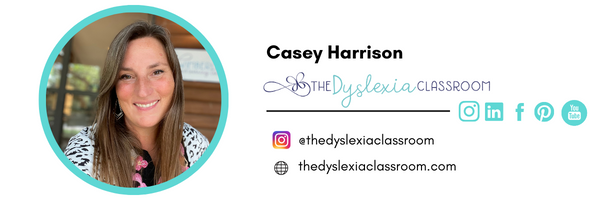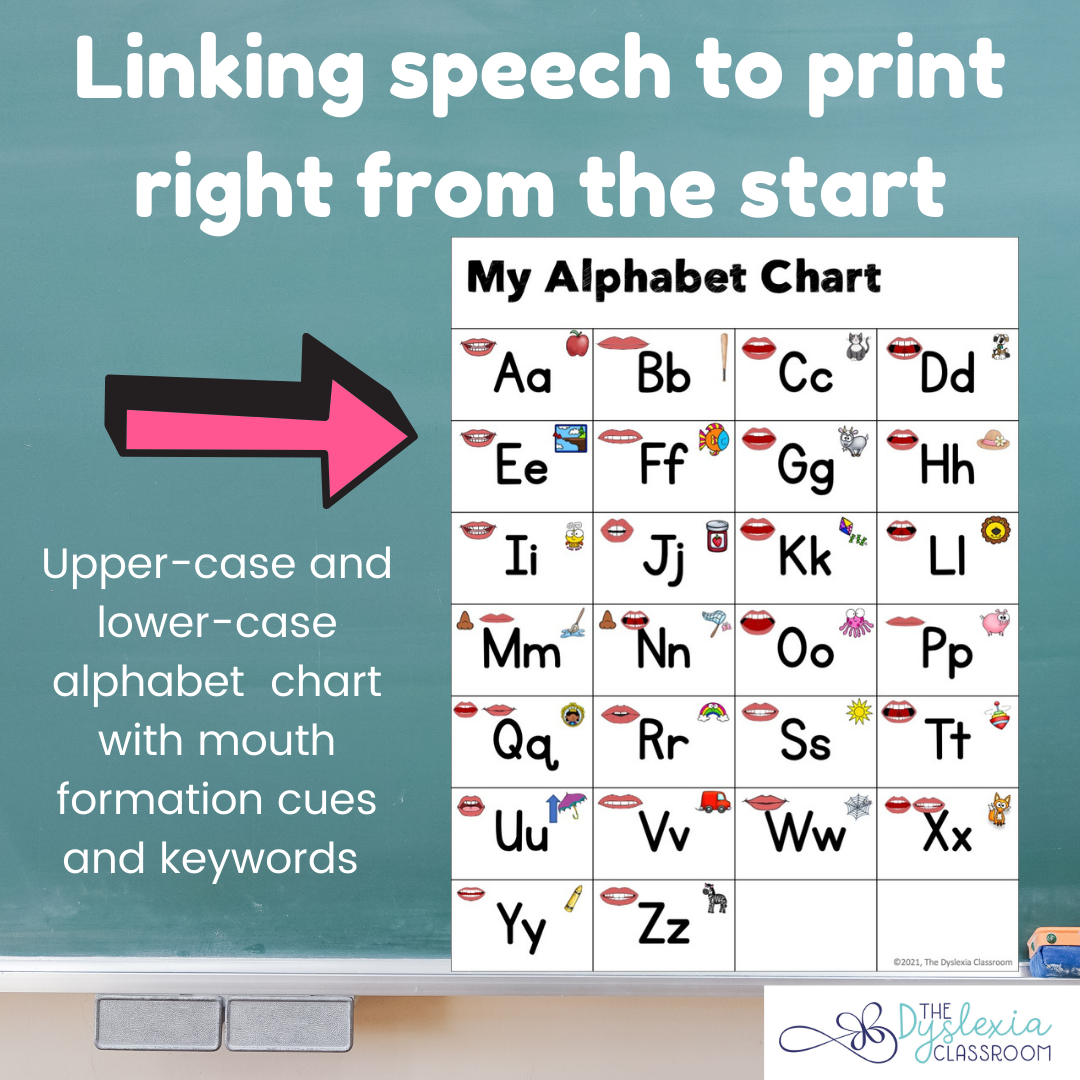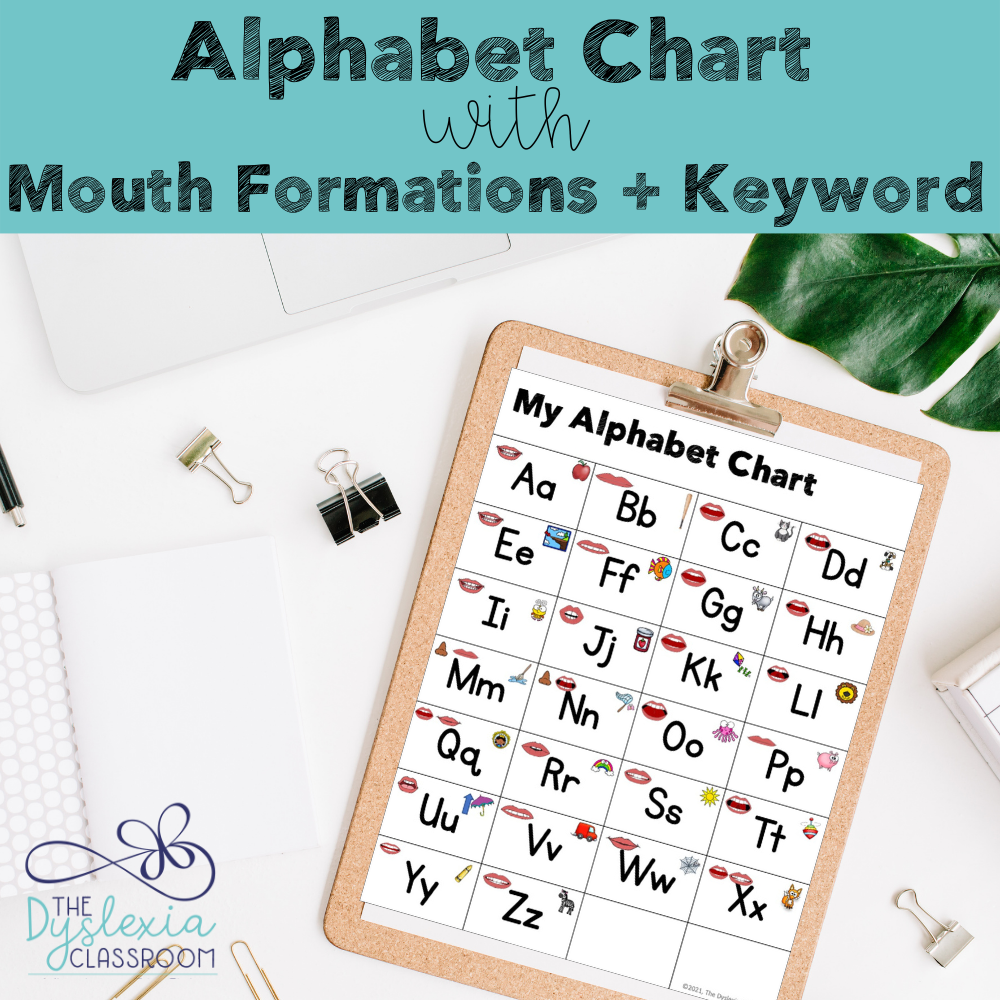What Research Says About Articulatory Awareness in Reading Instruction
This week on Instagram when I shared the alphabet chart I use with my early learners, including mouth formation cues and corresponding keywords, I received a question about the research behind articulatory awareness regarding reading instruction. It is so important that our work be grounded in current research, so I appreciated this question and want to address it here.
In my work with students, we focus on the speech-to-print approach. I explicitly teach phonemes, or those individual speech sounds, to students. We begin by introducing the sound and connection to the mouth formation. Research shows that our brain makes memory traces of sounds by paying attention to our mouth formations. When we begin with this sound, we're laying the foundation for knowledge of graphemes. This articulatory awareness anchors our phoneme-grapheme correspondences.
Obviously, I am a big proponent of beginning my literacy instruction by focusing on speech production and then linking that knowledge to the corresponding letter representation. But where is the research to support this?
Research Supporting Phonemic Awareness
There is widespread agreement that phonological skills such as perceiving sounds in speech, identifying rhymes, and blending and segmenting words are the foundation for learning to read and write. A National Reading Panel in-depth review of 52 phonemic awareness articles found that explicitly teaching phonemic awareness directly impacts children's reading, significantly more than instruction that lacks any attention to phonemic awareness. This evidence was so clear that they recommended that explicit phonemic awareness instruction be a part of classroom reading instruction beginning in preschool. The report also showed that when it was released (2000), little importance was given to phonemic awareness within the general classroom setting.
"The importance of articulation to teach PA is not generally recognized"
Boyer, N. & Ehri, L.C., (2011). Contribution of phonemic segmentation instruction with letters and articulation pictures to word reading and spelling in beginners. Scientific Studies of Reading, 15(5), 440-470.
What do phonemic awareness and articulatory awareness have to do with dyslexia?
The current definition of dyslexia brings awareness of phonology's importance and impact on dyslexic learners.
"Dyslexia is a specific learning disability that is neurobiological in origin. It is characterized by difficulties with accurate and/or fluent word recognition and by poor spelling and decoding abilities. These difficulties typically result from a deficit in the phonological component of language that is often unexpected in relation to other cognitive abilities and the provision of effective classroom instruction. Secondary consequences may include problems in reading comprehension and reduced reading experience that can impede growth of vocabulary and background knowledge."
Adopted by the IDA Board of Directors, Nov. 12, 2002.
The deficit in the phonological component of language within this definition connects to our work with speech sounds and their letter representations. Children, especially those with a language-based learning difference like dyslexia, need direct, strongly auditory-based instruction in each of the 44 English language sounds to build sound-symbol correspondences. The relationship and discrimination between phoneme production and phonological awareness lead to more effective reading and spelling.
Phonemic awareness teaches students to hear and manipulate the smallest units of sound and understand that spoken words are made up of sequences of speech sounds. We can support phonemic awareness with students by bringing awareness to the articulatory features of individual phonemes or speech sounds as we link sounds to print. The National Reading Panel showed that connecting letters to sounds (graphophonemic connections) during phonemic awareness tasks benefited students in reading and spelling.
"Our interpretation is that awareness of articulatory gestures facilitates the activation of graphophonemic connections that helps children identify written words and secure them in memory."
Castiglioni-Spalten, M. & Ehri L.C., (2003). Phonemic Awareness Instruction: Contribution of Articulatory Segmentation to Novice Beginners' Reading and Spelling. Scientific Studies of Reading, 7(1), p. 25.
When we explicitly teach phonemes' articulatory features, we are helping to create links between the individual speech sounds and the letter representations. Sound production and mouth formations are key to helping students link the phonemes, those sounds that they hear, to the graphemes, which are the letter representations of those spoken sounds. They also provide students and teachers with cues for error corrections. Explicitly teaching these to our students provides them with the knowledge and ability to analyze sounds in a deeper way.
Sound discrimination can be tricky for some students, especially the short e and short i sounds. Many children will confuse these two vowel sounds in phonology work, reading, spelling, and sometimes running speech. Some students may also struggle with phonological processing, have speech sound errors, sound substitutions, omit sounds, add sounds, or distort sounds. Read all about my tip for this HERE.
Individual phoneme production is an integral part of reading and spelling instruction. Students need to be able to isolate phonemes to segment. The skill of segmenting is the ability to take apart individual phonemes, or sounds, within words. Think of these as the parking spots for the letters representing these sounds. When we help students identify the placement of their mouth for individual sound production, we create a connection between what we are hearing and how that sound feels in our mouth.
"How Can Teachers Help Students Develop Phonemic Awareness? Focus attention on how the mouth changes when pronouncing different phonemes. Focusing attention on the changes in the mouth as words are pronounced is an effective way to identify phonemes."
A Closer Look at the Five Essential Components of Effective Reading Instruction: A Review of Scientifically Based Reading Research for Teachers, 2004, Learning Point Associates. https://files.eric.ed.gov/fulltext/ED512569.pdf
These articulatory gestures are grouped by stops, fricatives, nasals, affricates, liquids, glides, and combinations. You can find my whole series on articulatory features, including videos HERE.
Teacher training continues to be an integral part of building the connections between speech production and reading and spelling.
Teacher knowledge and awareness of how speech production links to reading and spelling are crucial.
"...when teachers are taught the specific linguistic knowledge required for teaching synthetic phonics, they acquire knowledge of the concepts. The reading scores of the children taught by these teachers also increase."
Malatesha J., R. Binks, E., Hougen, M., Dahlgreen, M., Ocker-Dean, E., & Smith, D.L., (2009). Why Elementary Teachers Might Be Inadequately Prepared to Teach Reading. Journal of Learning Disabilities, (42) p. 394.
I hope this information about articulatory awareness in reading instruction helps you understand the importance of it on students' reading and spelling success. Remember, our work should always be based on research. Do you have a question that you would like answered? I'd love to answer it in a future blog post. Contact me HERE.

This information is the intellectual property of @2016 The Dyslexia Classroom. Do not use or repurpose without expressed permission from The Dyslexia Classroom. Please give The Dyslexia Classroom an attribution if you use, reference, or quote/paraphrase copyrighted materials. This includes but is not limited to blogs, social media, and resources.








